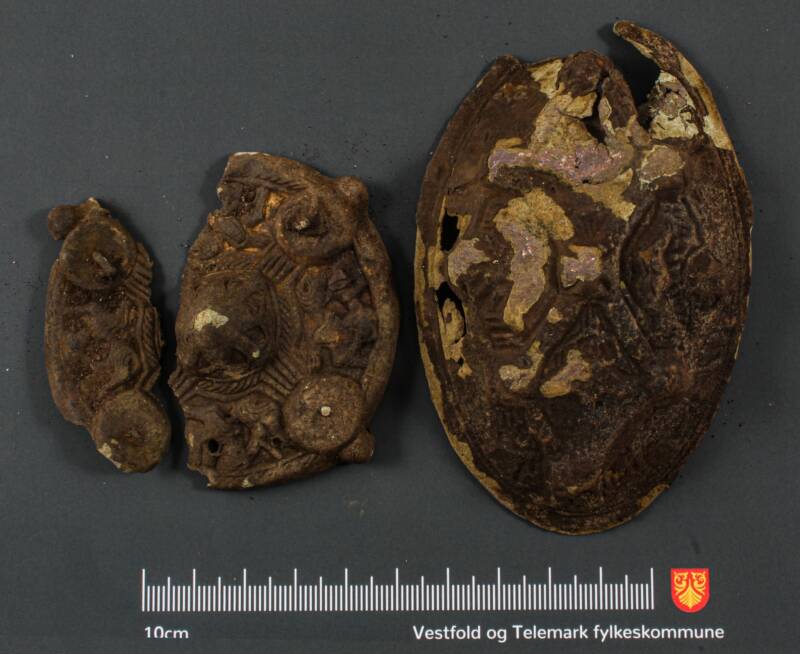Scythian warlord's scepter found in Bulgaria, ancient wine jars unearthed in Egypt, Viking brooches discovered in Norway.
2,500-Year-Old Bone-Carved Scepter That Once Belonged To A Scythian Warlord Unearthed In Bulgaria

BTAThe scepter was unearthed in the remains of Solnitsata, a fortified settlement established circa 5600 B.C.E. that flourished as a center of salt production and is widely recognized as the oldest city in European history.
Widely recognized as the oldest city in European history, Solnitsata was established in present-day Bulgaria circa 5600 B.C.E. and flourished as a center of salt production for more than a millennium. Though its population was only 350, Solnitsata grew to include fortified walls, a citadel, and pottery production facilities as the city’s overseers attained great wealth thanks to the extraordinary value of salt as a food preservative in this region at the time.
Now, archaeologists digging at Solnitsata have uncovered the grave of a Scythian warlord that dates back to the 5th century B.C.E. Not only have researchers unearthed the remains of the warlord as well as the horse he once rode in battle, they’ve also found a rare scepter made of bone. In addition to being recognized as skilled mounted warriors, the Scythians were known for their bone-carving prowess, and this scepter is being hailed as one of the most striking ever found.
Learn the full story behind this unique discovery here.
5,000-Year-Old Wine Jars Found In Ancient Egyptian Tomb Of Queen Merneith

Egyptian Ministry of Tourism and AntiquitiesArchaeologists discovered hundreds of sealed wine jars in the tomb of Queen Merneith in the ancient city of Abydos in Egypt.
Archaeologists just unearthed hundreds of sealed and unopened wine jars at the Umm El Qa’āb necropolis in the ancient city of Abydos in Egypt.
The team of researchers came across the wine jars while excavating the tomb of Queen Merneith, who was possibly the first female pharaoh of Egypt during the First Dynasty. Merneith is assumed to have come to power sometime around 3000 B.C.E.
The jars were in excellent condition, and the wine remnants found inside were approximately 5,000 years old. In addition to the wine jars, the archaeologists also found well-preserved grape seeds, also known as pips.
Dig deeper in this report.
Norwegian Family Looking For Lost Earring Stumbles Upon Viking Relics Instead

Facebook/Cultural Heritage of Vestfold and Telemark CountyThese two brooches were once used to secure the straps of a woman’s dress.
When Jan Erik Aasvik’s mother lost an earring in the garden of their home on Norway’s Jomfruland island, he decided to pull out a metal detector and scour the yard for the missing jewelry. But when the device started beeping near a tree, he dug up two 1,200-year-old Viking relics instead.
Aasvik stumbled upon two bronze brooches: one large oval brooch and one smaller circular brooch. The brooches were characteristic of the ninth century and were decorated with engravings of animals and other elaborate patterns. Because they also have traces of gold, archaeologists believe that the brooches were once gilded.
Read on here.





